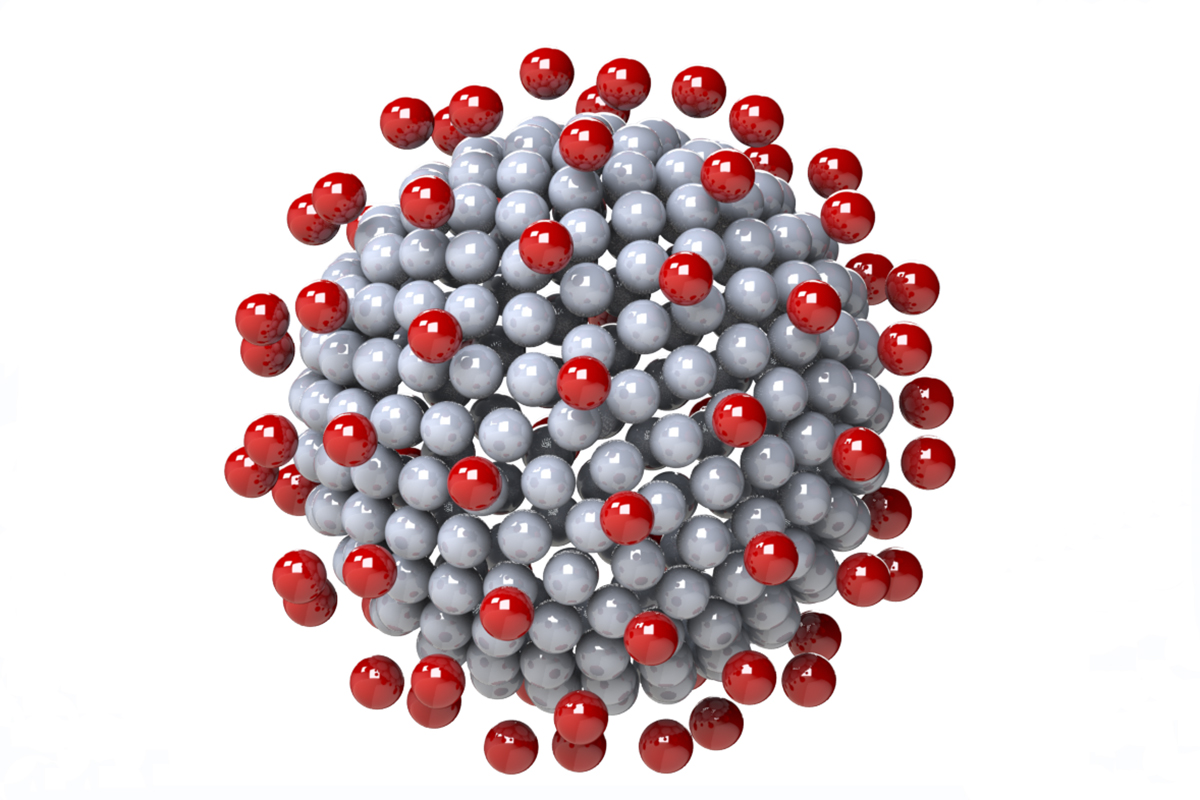A different view of COVID-19
November 2, 2020
Share
Queen’s University researcher Mona Kanso has developed a new and unique way of looking at viruses, including SARS-CoV-2, the virus that causes COVID-19. By sculpting the coronavirus particle from tiny beads, and then applying the laws of fluid physics to each and every bead, Kanso calculates the properties of the coronavirus from its shape. While the full potential of this new method is still being realized, researchers expect it will accelerate the path to developing a treatment and, eventually, finding a cure.
“We know of no other way to calculate the transport properties of a virus from its shape,” Kanso says.
 SARS-CoV-2 is a spherical shell covered with spikes called peplomers, which the virus uses to attach itself to the cells it infects. Since the virus cannot move itself, it relies on the random thermal motion of its fluid surroundings, to rotate, to align its spikes with its target on a cell. Once attached, the virus can infect the cell and then spread.
SARS-CoV-2 is a spherical shell covered with spikes called peplomers, which the virus uses to attach itself to the cells it infects. Since the virus cannot move itself, it relies on the random thermal motion of its fluid surroundings, to rotate, to align its spikes with its target on a cell. Once attached, the virus can infect the cell and then spread.
“Think of it like a jittery spaceship docking with a space station,” explains Kanso, (PhD chemical engineering candidate, Vanier Canada Research Scholar). “The jittery virus must align two of its adjacent spikes, just so, with the binding sites so it can attach to the cell. It relies on kinetic molecular energy from the fluid to rotate itself into position.”
This research opens the door to understanding drugs that might prevent cell binding by interfering with virus rotational diffusion. It also deepens scientists’ understanding of viral cellular infection.
Kanso collaborated with her Queen’s summer trainee, Jourdain Piette, along with their Queen’s advisor, Professor Jeffrey Giacomin, sheltered in place on his sabbatical leave on the campus of the University of Nevada, Reno, and with Dr. Giacomin’s UNR host, Professor James Hanna.
“In this work, we uncover a better way of looking at viruses,” says Kanso. “Like any engineering problem, trying to solve it without understanding it, takes forever. This coronavirus is spiked for more than one reason. There is the obvious mechanical function of target attachment. But its spikes are also controlling its own jitter, by receiving energy from the fluid, to help it dock with its targets. This coronavirus is a far more formidable adversary than it looks.”
The next step is to explore how the triangular bulb on the tip of each coronavirus spike affects infection. Also, under the microscope, not all of the coronaviruses are spherical. Called pleomorphism, no one knows how this affects the alignment and attachment probability.
The research is published, and freely available, in Physics of Fluids.